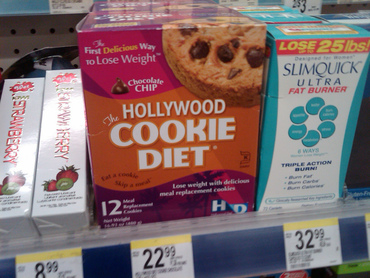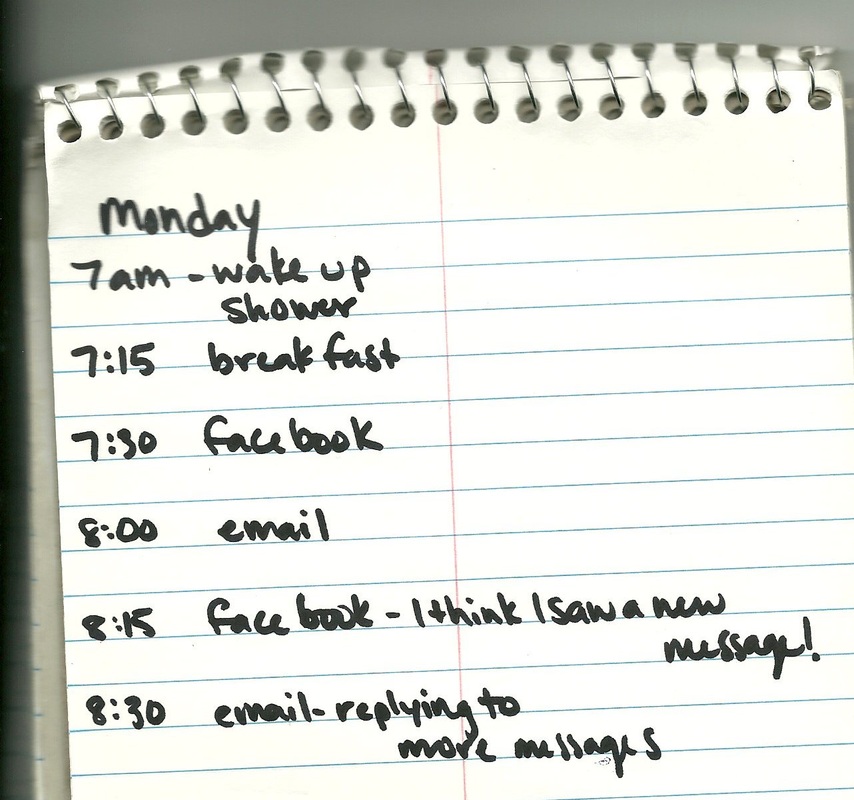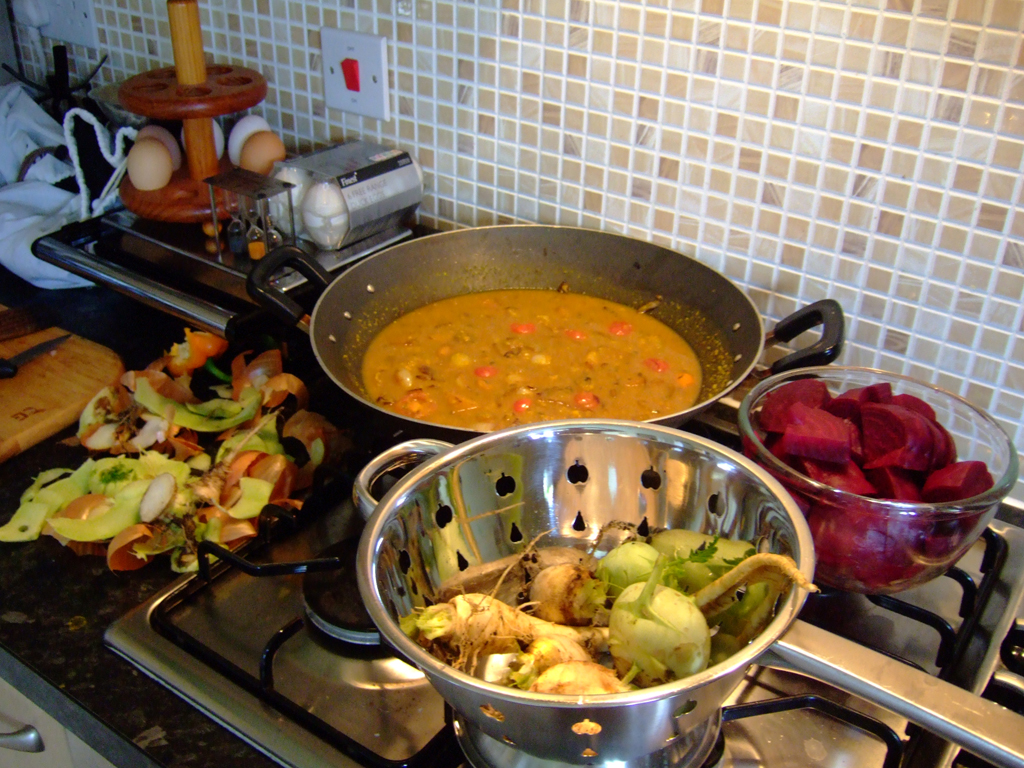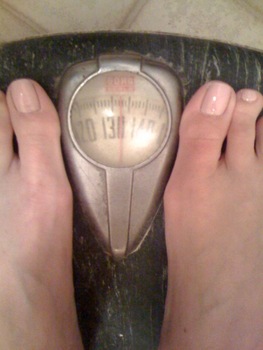 So back in my "Nutrition 101" days of my Naturopathic medical education, I learned the commonly taught old school nutrition idea of: "weight loss = more calories burnt than consumed" So that's it, huh? Eat less calories, burn more calories and weight loss will be a sure thing? Well, most of us know it's just not that easy. In fact, many find that they gain weight during and after dieting, even if they increase their activity level. So what's going on?! The fact of the matter is, only 1 in 6 dieters keeping the weight off (after a year). So why can't we all just follow that easy formula and lose those extra pounds?! ...because it just isn't so simple. We are a little more complex than calorie consuming and burning machines (but you probably knew that already). An article published last week in the Journal of the American Medical Association provides a little insight into some of those dieting and weight loss complexities. The publishing authors looked at overweight research participant using three different diet and weight loss programs and measured their success. The three diets were low-fat, low glycemic and low carbohydrate (high protein). Under carefully monitored in-patient hospital settings, the low glycemic dieters burned an average of 200 calories per day more than the low fat. The low carbohydrate dieters lost 300 calories more per day than the low fat dieters but saw an increase in blood levels of inflammatory markers (cortisol and CRP). So what does this all mean?! Just follow the diet where people burned the most calories while being constantly monitored in the hospital? Well, that doesn't sound like a very enjoyable diet program to me. If you're considering a weight loss-focused diet and exercise program, think about getting an expert involved to guide your path to success. If you haven't heard by now, my past 'slim down & happy up' program sessions have provided women (& men) with guided, individualized meal planning, diet guidelines and exercise recommendations. Combined with unique natural formulas that I craft specifically to each participant, this really is my all-in-one tool to address weight loss and stress reduction for long-term success. Registration for our next session opens Monday, August 19th, full details here. Join us for 3 months, and just see what a profound impact you and I can have on your health and quality of life!
0 Comments
There are so, so many things that I despise about all the popular nationally-known diets. If it involves meal replacement shakes, points or counting anything, I probably hate it.
From ‘slim down & happy up”: A lot of well-known weight loss programs have good intentions but poor execution. A calorie restricted diet is a common strategy. Calories in, calories out, right? We just get you to eat less and work out more, and the pounds will fly right off, right? Nope. It’s not that simple. So let’s highlight one very popular weight loss strategy: portion control. Blech. Even saying “portion control” makes me uncontrollably contort my face like these kiddos (except the yogurt girl; I’m pretty sure I’ve never looked that cute). “But, Dr. Angela, shouldn’t you be all for portion control since you help women lose weight?” You would think, but no, no I’m not. Because food selectivity is much more important than portion control. While helping women lose weight through slim down & happy up, we talk so very much about our food choices, and leave grams, calories and servings to those other guys. I actually find that both slender and overweight women alike tend to under-eat- I more commonly advise women to eat more food rather than to scale it back. We should be more mindful of what you’re eating, and less about how much. Women in ‘slim down & happy up’ eat until they are full, breakfast, lunch and dinner. And how is that? How am I assisting in weight loss without counting calories, points or replacing meals with shakes? Well, that takes a while to explain. Five weeks, to be exact. Never fear, registration is now open for the next session of ‘slim down & happy up.’ We’re starting June 27th, so you’ll have to get on board before then! Oh, and to get a private discount code for this current session, sign up above to get on my contact list. Here’s to eating to your fill, 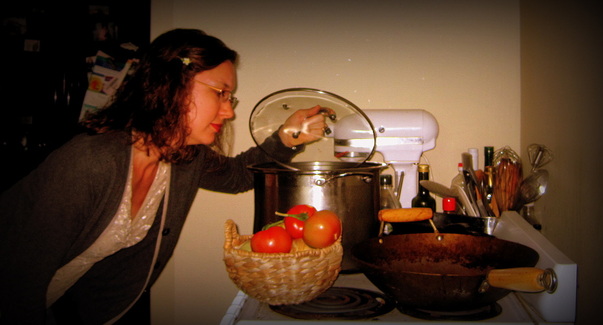 cook smarter, stress less ...you gotta eat, so why not upgrade your kitchen time? do you... ...struggle with trying to cook homemade food without spending all your time in the kitchen? ...stare into your fridge for long minutes, with only mustard and bare shelves staring back at you? ...want to eat healthier lunches at work, but never cook ahead of time, so you end up eating out more often than you'd like to admit? (warning sign #1: the fast food clerk knows your name and order) if so, then join Dr. Angela on this free 3 day workshop and find out how to... ...structure your kitchen time for minimal prep and maximal meal production ...eat better, cook smarter and stress less over your food choices ...learn how to keep your fridge stocked with healthy meals and snacks ...and get a few bonus recipes to help you get started, now! join me from the comfort of your pjs Register for the workshop now (it takes 2 seconds), then sit back and follow along as the entire course is sent to your inbox through my short course on upping your kitchen game. Each day will bring a new e-booklet to your inbox, so you can read and follow along at any time. so what's the cost? For all this love, time, and organization, I'm bring you Let's Get Cooking for free ...but only if you sign up now through June 9th alright, so when do we start? Let's Get Cooking runs Monday June 10th to Wednesday June 12th. Sign up today to save your spot. If you have a friend who also needs some kitchen intervention, pass this link along and Get Cooking together! What do you never seem to have enough of? Time. Money. Matching socks. Ok, well I can only help so much; those socks are up to you. But how about your time? Yeah, you've heard of time management, but doesn't it seem like you're at the receiving end, being managed by some other force? A force which apparently hates the thought of you having time to yourself, of ever feeling relaxed. So let me shed a little light on this conundrum. Let's take back the reigns to your calendar, one step at a time. First, it's time to face the hard facts. Let's just go ahead and rip off this band-aid. Step One: time for a Time Audit Your homework, should you choose to accept it is to track your time. All your time. All your activities. Try doing this consistently for a week, but even a few days will be quite revealing. (here's a few apps for fool-proof, forget-me-not time tracking, here, here and here) Attempt to track all your waking hours, noting everything that took more than a few minutes of your time. What do you see? Any patterns? Anything surprising? Getting a few days or more under your belt will help you get the best picture of how you spend your time. Like money, time can be spent, invested, wasted or saved. Are there areas where you could be spending your time a little more wisely? Step two: craft your own inner time snob After you have diligently tracked for a week or so, let the next week be all about time analyzing. Scrutinize your time spent in every area of your life. It's all about values and priorities. Here are some areas where I help my patients find more time: -- time for self care (exercise, sleep, hobbies, play) -- time for cooking healthy meals -- time for rest, restoration, nurturing and downtime when necessary And where are we going to find all that time? It doesn't just grow on trees, ya know. Well, let's run through an example. Say you can't find the time to spend an hour cooking for yourself on the weekends, but you want to prepare a few batches of food for quick-to-reheat workweek lunches and dinners. (in slim down & happy up, I share with participants my exact steps to minimize kitchen time for maximum meal impact). Alright... where are we going to find an hour? How about cutting email time from six (or is it twelve?) times a day to three? Or limiting facebook time to a twice a day indulgence (or better yet, just dump that app from your phone and remove the impulse entirely). The success of time re-organization comes from you. Your input and your investment in its success. If you take a keen eye to how (and where) you use your time, you'll be surprised where all your free time is hiding out. Step Three: staying on top of it all What's a sure-fire plan for failure? Lack of planning, and being stressed out. What can help both of those? Having a game plan, of course. Have a deadline, project or other event looming on your calendar? Then it's time to bring your best inner time snob and stay riding that to-do list wave (it's better than drowning in responsibilities, after all). As someone who pretty much always has a full schedule, I definitely have to practice what I preach here. Since the last thing I want to do is add a huge list of tasks to an already bursting-at-the-seams schedule, I go into much more specific detail about my approach and strategy to do it all while keeping sane (and stress-free, in fact!) in slim down & happy up. The fall session is just about open for registration, join us on this next round and find a healthier lifestyle for yourself and your family. I'd love to hear what kinds of creative time planning you use, so please leave a comment below. To your good health (which includes plenty of rest and play time!), Haven't heard? Join me for slim down & happy up, a unique stress-reducing and healthy weight-achieving program crafted especially for you, the busy lady. More great stuff by me: Just who do I think I am, anyways? Bulletproof balance (make room for this in your schedule and you won't be sorry!) photo credit: BeverlyLR
Ninety percent (90%!) of cancers have preventable causes. Here's a quick "What are my chances of getting cancer" quiz. Count up your points for these health factors. Do you: Exercise? Yes= 0 Sometimes=1 Never=2 Smoke? No=0 Used to=1 Yes=2 Drink alcohol? No=0 More than 2 a day=2 Get checked for STIs? Yes I have=0 No or "What is that?" =1 Eat fast food? No=0 Occasionally=1 Daily=2 Have exposure to any of these known carcinogens (means cancer-causers). One point for each: radiation exposure (occupational or many, many X-rays), polluted water, chemical or industrial toxin exposure (such as from your occupation or living nearby a chemical plant) and a history of bad (blistering) sunburns. Now, if you didn't notice the pattern above, this is not the SATs. More points is not better- it's worse off for your cancer risk. And since 95-98% of all cancers are not genetic (inherited and perhaps inevitable), then that means there's ample time and resources for cancer prevention. Take a look at this engaging infographic from Rock Your Cause and see your nearest preventive medicine doc and cultivate your health for now and decades to come. Contact me for more, or feel free to email me day or night at [email protected]. Be healthy, well and happy. And remember, "prevention is the best cure."
There are over 300,000 people in the US who suffer a stroke each year, especially those with a personal and/or family history of heart disease, diabetes and clotting disorders. The aftermath is uncertain and often ranges from paralysis to difficulty speaking and other far-reaching effects. Since the damage is already done by the time someone knows they have a stroke, prevention is key for this potentially devastating disease. Research published last week in the British Medical Journal found that those who ate fish 2-4 times a week had a 6% less chance of a stroke, and those who ate fish 5 times a week had a 12% less chance of having a stroke. Fish has been long recognized as an "anti-inflammatory" food, meaning that it reduces, rather than stimulates an aggravation of your immune system when you eat it. Just remember, that there is a wide diversity of fish out there, and be cautious in your choices.
Wild-caught Alaskan salmon, for example, has higher amounts of Omega 3 fatty acids and bioflavonoids than farmed Atlantic salmon- which is "pinked up" by artificial dye to look as healthy and fresh as its wild counterpart. And when considering species of fish and fishing practices, over fishing and other environmental concerns (not to mention heavy metal content such as Mercury), it can at first be difficult to find a healthy source of fish that you feel good purchasing. Take a look at Environmental Working Group's Safe Fish List and this Sustainable Seafood Shopping Guide for pointers, recommendations and further reading. Here's to your good health. I don't know where this phrase originated, but it sure contains a lot of wisdom: "Sweet to the tongue, bitter to the stomach. Bitter to the tongue, sweet to the stomach." The first part refers our society's love affair with all things sugary. Now, don't get me wrong, I like my sweets every now and then. But in the face of societal epidemics heavily relating to lifestyle choices, we could all benefit from realizing and acting upon the common knowledge that too much sugar in the diet wrecks our body in many ways. A few examples of this are blood sugar mishandling leading to diabetes, an overabundance of inflammatory reactions (see my earlier article on inflammation), insidious damage to the liver leading to many metabolic issues such as high blood lipids (cholesterol, triglycerides) and a weakened immune system. Sweets just aren't that sweet to us. Now there's a million and one ways to combat the amount of sugar in one's diet, most of that being through diet change. Along with a healthy exercise regimen, including botanical, vitamin and pharmaceutical intervention when necessary, we can do a lot to counter the effect of our diet being "bitter to the stomach." So what does tasting bitterness have to do with helping the stomach? Well, when the tongue receives bitter signals (herbal bitters before meals, or with other botanical or food choices) this starts the digestive fire, and sends messages all over the body to expect a meal. The stomach then starts firing up, and all the other digestive organs (gall bladder, pancreas and the intestines further down the digestive tract) get clued into what's going and are then prepared for the digestive process. This whole cascade of processes is greatly helped by preceding each meal with a small amount of bitters. This idea complements and builds upon my preceding article on being a food connoisseur. When the whole body, from brain to guts, has gotten the signal to be expecting a meal, then one's body is primed to optimally digest that meal- the way it was intended to function. I welcome comments, questions and opinions through my Contact page.
Thank you for reading, I appreciate all my readers' feedback! -Angela |
Archives
June 2024
Categories
All
|
about the doc |
patient infocontact |
|
Privacy Policy
© Copyright 2011-2024, Dr. Angela Cortal ND LLC website content is for educational purposes only and is no substitute for medical advice (see the Terms of Use Agreement for this site), you must establish a doctor-patient relationship to receive that! |
